Susmita Dey Manasi
An Open-Source ML-Based Full-Stack Optimization Framework for Machine Learning Accelerators
Aug 23, 2023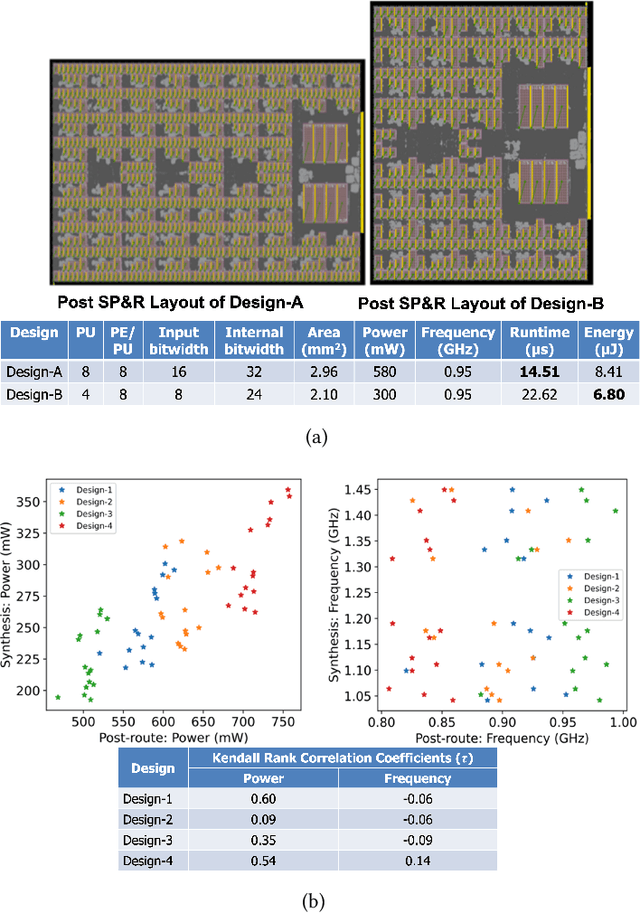
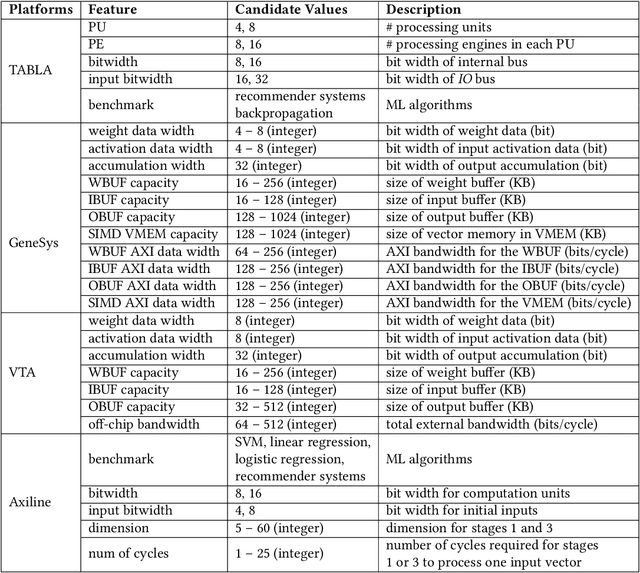

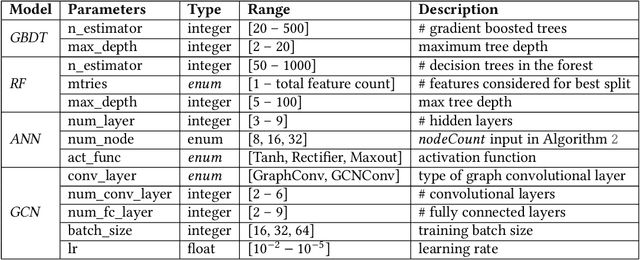
Abstract:Parameterizable machine learning (ML) accelerators are the product of recent breakthroughs in ML. To fully enable their design space exploration (DSE), we propose a physical-design-driven, learning-based prediction framework for hardware-accelerated deep neural network (DNN) and non-DNN ML algorithms. It adopts a unified approach that combines backend power, performance, and area (PPA) analysis with frontend performance simulation, thereby achieving a realistic estimation of both backend PPA and system metrics such as runtime and energy. In addition, our framework includes a fully automated DSE technique, which optimizes backend and system metrics through an automated search of architectural and backend parameters. Experimental studies show that our approach consistently predicts backend PPA and system metrics with an average 7% or less prediction error for the ASIC implementation of two deep learning accelerator platforms, VTA and VeriGOOD-ML, in both a commercial 12 nm process and a research-oriented 45 nm process.
Performance Analysis of DNN Inference/Training with Convolution and non-Convolution Operations
Jun 29, 2023Abstract:Today's performance analysis frameworks for deep learning accelerators suffer from two significant limitations. First, although modern convolutional neural network (CNNs) consist of many types of layers other than convolution, especially during training, these frameworks largely focus on convolution layers only. Second, these frameworks are generally targeted towards inference, and lack support for training operations. This work proposes a novel performance analysis framework, SimDIT, for general ASIC-based systolic hardware accelerator platforms. The modeling effort of SimDIT comprehensively covers convolution and non-convolution operations of both CNN inference and training on a highly parameterizable hardware substrate. SimDIT is integrated with a backend silicon implementation flow and provides detailed end-to-end performance statistics (i.e., data access cost, cycle counts, energy, and power) for executing CNN inference and training workloads. SimDIT-enabled performance analysis reveals that on a 64X64 processing array, non-convolution operations constitute 59.5% of total runtime for ResNet-50 training workload. In addition, by optimally distributing available off-chip DRAM bandwidth and on-chip SRAM resources, SimDIT achieves 18X performance improvement over a generic static resource allocation for ResNet-50 inference.
GNNIE: GNN Inference Engine with Load-balancing and Graph-Specific Caching
May 21, 2021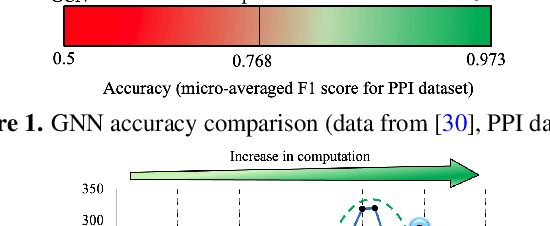
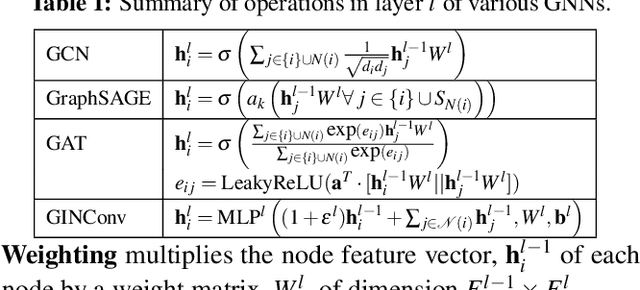
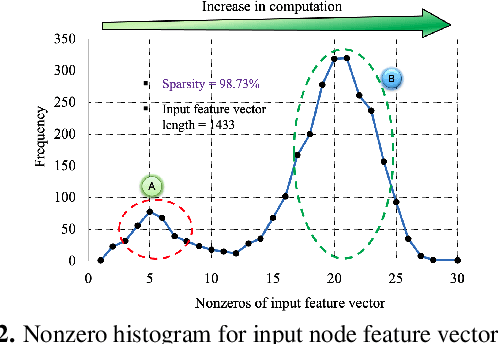

Abstract:Analysis engines based on Graph Neural Networks (GNNs) are vital for many real-world problems that model relationships using large graphs. Challenges for a GNN hardware platform include the ability to (a) host a variety of GNNs, (b) handle high sparsity in input node feature vectors and the graph adjacency matrix and the accompanying random memory access patterns, and (c) maintain load-balanced computation in the face of uneven workloads induced by high sparsity and power-law vertex degree distributions in real datasets. The proposes GNNIE, an accelerator designed to run a broad range of GNNs. It tackles workload imbalance by (i) splitting node feature operands into blocks, (ii) reordering and redistributing computations, and (iii) using a flexible MAC architecture with low communication overheads among the processing elements. In addition, it adopts a graph partitioning scheme and a graph-specific caching policy that efficiently uses off-chip memory bandwidth that is well suited to the characteristics of real-world graphs. Random memory access effects are mitigated by partitioning and degree-aware caching to enable the reuse of high-degree vertices. GNNIE achieves average speedups of over 8890x over a CPU and 295x over a GPU over multiple datasets on graph attention networks (GATs), graph convolutional networks (GCNs), GraphSAGE, GINConv, and DiffPool, Compared to prior approaches, GNNIE achieves an average speedup of 9.74x over HyGCN for GCN, GraphSAGE, and GINConv; HyGCN cannot implement GATs. GNNIE achieves an average speedup of 2.28x over AWB-GCN (which runs only GCNs), despite using 3.4x fewer processing units.
 Add to Chrome
Add to Chrome Add to Firefox
Add to Firefox Add to Edge
Add to Edge